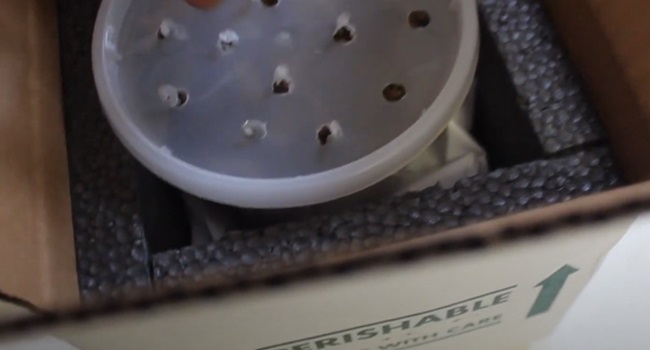Shipping a tortoise isn’t like mailing a letter. You can almost compare shipping a sulcata tortoise to shipping glassware or breakables. You have to carefully pack the tortoise, and depending on the size, you have to be careful of the shipping provider you choose. When you ship sulcata tortoises, you want to adhere to legal regulations of where you’re shipping, as well as consider the tortoise’s safety.
Legal Regulations and Considerations
Ensure that the state where the recipient lives is “sulcata safe.” All states have a list of animals that they deem safe to have as pets. They have lists of animals you can have as long as you have a permit to do so. So, it’s a good idea to understand what states you may not be able to ship a sulcata tortoise.
Consider obtaining a health certificate from the vet, to ensure the tortoise is healthy and free of parasites. This health check may be required by some carriers, including Delta Dash.
Choose a Reputable Shipping Carrier
Not all shipping carriers will ship live animals.
- UPS accepts shipping common pet birds, but they prohibit mammals, endangered species and poisonous reptiles.
- Fedex allows shipping small, harmless cold-blooded animals and fish, as well as non-nuisance insects, whereas they prohibit large mammals and livestock. However, some Fedex facilities and locations that accept Fedex packages will NOT ship any live animals.
- DHL prohibits shipping animals of any kind, including but not limited to insects, tortoises, frogs, crabs, lobsters, hatching eggs and birds.
- USPS accepts shipping small, harmless cold-blooded animals, except for snakes, turtles and turtle eggs. USPS prohibits live birds, warm-blooded animals and poisonous insects and spiders.
Many reptile breeders will ship using shipyourreptiles.com you can buy materials and price shipping methods. However for larger tortoises, you’ll need to contact Delta Dash for quotes and options.
Packaging Sulcata Tortoise for Shipment
Once you’ve found a carrier to ship sulcata tortoise, you need to ensure the weight of the tortoises. It is not ideal to ship a sulcata tortoise that measures over 18” and weighs 20-30 pounds. For larger tortoises, you’ll want to look into Delta Dash.
Ship a Baby or Small Sulcata Tortoise
When shipping a smaller tortoise through Fedex or another carrier, you’ll want to pick a sturdy box. For smaller, baby tortoises, put the tortoise in a clear deli cup or Tupperware with holes in it with damp (not soaked) paper towels or sphagnum moss at the bottom. The container helps minimize stress and prevent injuries. Choose a container that is not too tall that the tortoise can flip over or around within it. Place a few pieces of tape around the lid so it doesn’t pop off during transit.
Do not put more than one baby tortoise in the container. One tortoise per container, but multiple containers are fine per box.
Line the box with Styrofoam and after placing the container in the box, file it with newspaper, brown packing paper or Styrofoam peanuts. Keep in mind that newspaper can be a heat conduit, so if shipping in warmer weather, you may want to consider a cold pack. And vice versa, when shipping in cold weather, consider a heat pack. But do keep in mind, either way, but more so with heat packs, is that the tortoise cannot get away from the heat, so if the weather is a mere 60-degrees, you may not need the heat pack. Use judgment on how hot the heat pack will get and be in an enclosed box.
When shipping overnight with Fedex or another carrier, make sure to ship Monday, Tuesday or Wednesday. Do not ship past Wednesday. In case of shipping issues, you don’t want your tortoise stuck over the weekend at the shipper’s warehouse.
Ship a Large Sulcata Tortoise
Larger tortoises that still fall under the weight and size limits acceptable to ship via Fedex or similar carrier, consider placing the tortoise in a snake bag for ventilation and safety. Add newspaper for packing material to reduce shaking and bumping around, minimize stress and prevent injuries.
For even larger tortoises, you’ll need to ship via Delta Dash. You’ll want to call for a quote. Many will ship large sulcata tortoises in plastic dog crates, whereas some will make a wooden crate with ventilation holes. I cannot testify if one method is better than the other. The plastic dog crate will allow plenty of ventilation but will not maintain any heat, whereas the crate will be solid all the way around and reduce stress and potentially maintain heat.
When shipping via Delta Direct, choose direct flights with no layovers to reduce the duration and possibilities of delay, layovers and loss.
Consider the Weather When Shipping Tortoises
Tortoises are cold-blooded. Before setting a shipping date, you’ll want to check the full forecast for several days to make sure the weather is acceptable for the full transit. Try to avoid shipping a sulcata tortoise in weather extremes. You can add cold packs and heat packs to the box, but keep in mind that a 48 hour heat pack can still get rather hot in a confined space. It’s best to use judgment when adding either to the box.
Label The Shipping Box or Crate
Label the outside of the box with “Live Harmless Animal” and “Handle with Care” and “Fragile” stickers. Consider “This Way Up ^” stickers as well.
Shipping Options
When shipping a tortoise with Fedex or similar carrier, purchase overnight early AM delivery. This reduces the stress as much as possible on the tortoise. Provide the tracking number to the recipient and monitor the tracking closely until the recipient has received the package.
Overall, shipping live animals can be a complicated process that requires a lot of planning. It’s always good to follow-up with the recipient on the overall state of the tortoise.







